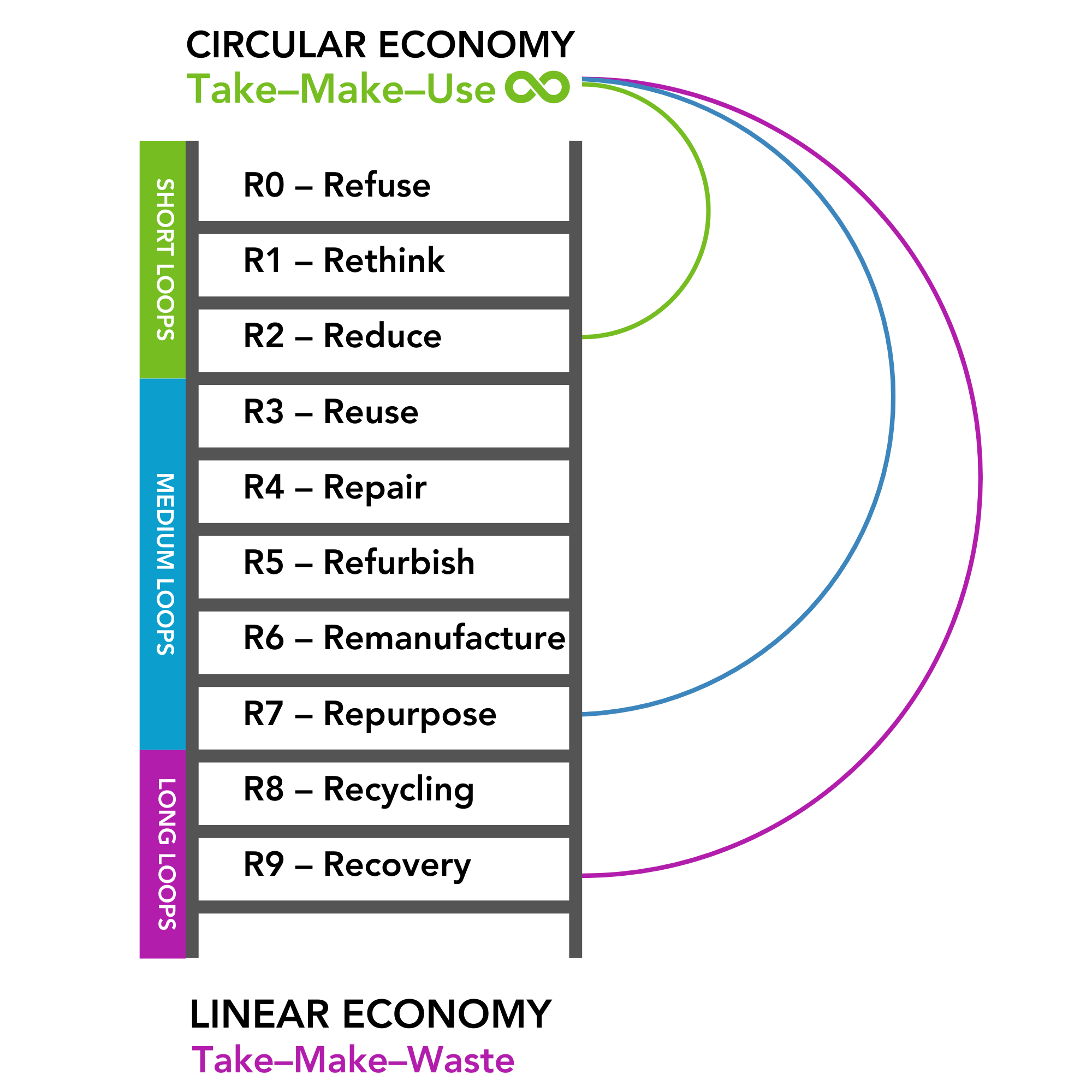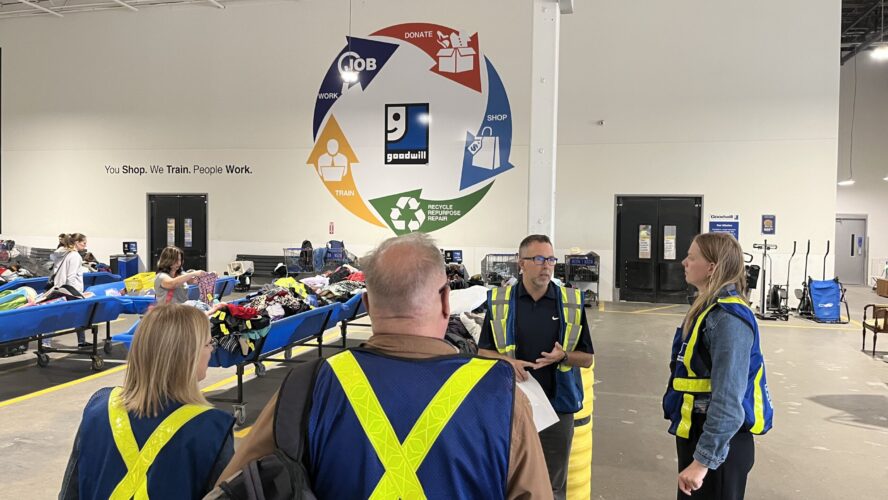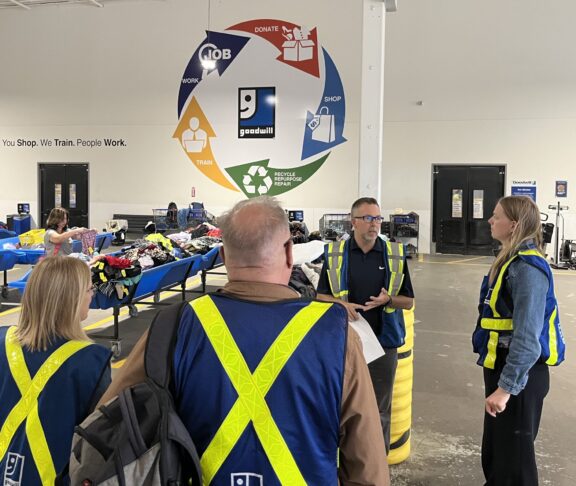
Jennifer Koole
Executive Director, Recycling Council of Alberta (RCA)
The RCA uses the R-Ladder and the loops within it to help guide participants on their path to circularity.
We’ve all heard of the 3Rs — Reduce, Reuse, Recycle — but when it comes to building a true circular economy, they’re just the beginning. Circularity is about long-term smart solutions, designing waste out of systems, keeping materials in use at their highest value and regenerating natural systems.
So, how do we know what to do first? What makes one circular action better than another? And how can businesses, communities, and individuals keep materials in use for as long as possible?
At the Recycling Council of Alberta (RCA), where we promote circular thinking, we use the R-Ladder and the loops within it to help answer these questions. The R-Ladder is a practical tool that ranks circular strategies from most to least circular, based on how efficiently they keep materials in circulation.
Many of our members are working to advance the circular economy too and we’re here to share the examples of the great work taking place along the R-Ladder rungs in Alberta and beyond.

The Higher the R, the Better the Loop
Here’s how the Good–Better–Best framework looks through the lens of the R-Ladder. Short loops return materials to use faster, with less energy or processing. Long loops take more time, energy, or transformation to reuse the material.
Good: Long Loops – Recycling & Recovery
These are familiar strategies. They require breaking materials down before reusing them, which uses energy and resources, however the materials recycled displace the need for further mining and resource extraction.
Here are some examples from Alberta.Cascades Recovery, Merlin Plastics, Revolution Plastics, and EFS-plastics are leaders in recycling paper or plastics. Catapult Environmental is exploring recovery through anaerobic digestion and biogas production.PlasCred Circular Innovations is pioneering chemical recycling technologies.
Better: Medium Loops – Reuse, Repair, Refurbish
These activities extend a product’s life with minimal transformation—keeping more value in the system.
Some examples include the Town of Banff through their Banff Borrows program promotes reusable to go cups, food take-out packaging and containers. Find Furniture Bank is a social enterprise that recirculates furniture. Goodwill Alberta and Backroads Reclamation give second life to products through repair and refurbishment. Circular Supply Inc., and Earth Warrior, remanufacture old materials into innovative new products.
Best: Short Loops – Refuse, Reduce, Rethink
The most circular option? Don’t create the product in the first place. Smart design and mindful consumption help us refuse what we don’t need and reduce what we do.
For example, Change Toothpaste has created toothpaste without harmful packaging. As well as, libraries of things and lending libraries are popping up across the Country (City of Lethbridge, Strathcona County), embracing the sharing economy.
Members across the value chain of circularity are promoting policies and practices that refuse single-use items or packaging and support refilleries and bulk-buy shops.
Why This Matters
The circular economy is a smarter system for how we produce and consume. By climbing the R-Ladder, Alberta’s innovators are showing what’s possible. We’re proud to support these leaders and help more organizations make the climb.
Visit recycle.ab.ca/rca-r-ladder to find more information about the R-Ladder tool and the RCA’s initiatives.
Visit our Enviro Businesses guide to reach our members: recycle.ab.ca/enviro-businesses



